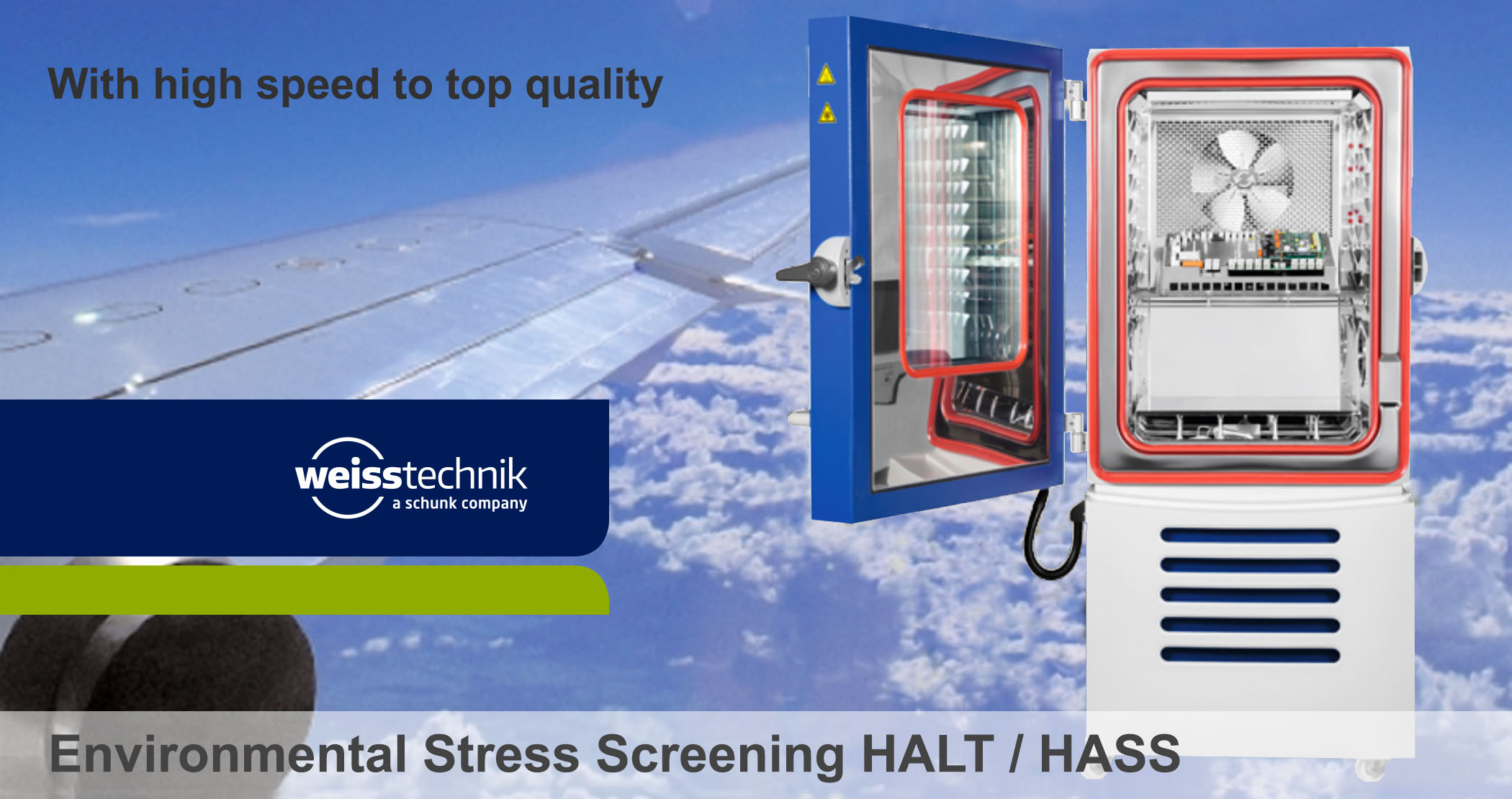HALT/HASS environmental test system
HALT is a step stress process performed during the product’s prototype phase that determines a product’s operating limits, identifies design weaknesses, and identifies weak components.

Test Equipment For Highly Accelerated Life Test and Stress Screen Applications.
The Star Galaxy™ HALT/HASS Systems are integrated Test Chamber/Vibration Table packages. The chambers are equipped with a Liquid Nitrogen (LN2) cooling system, which provides the rapid thermal change rates required to achieve maximum product stress. The vibration table is a state-ofthe-art, six degree-of-freedom (6DoF) tri-axial pneumatic vibration table.
HALT/HASS Principle
HALT is a step stress process performed during the product’s prototype phase that determines a product’s operating limits, identifies design weaknesses, and identifies weak components.
The prototype phase is the fastest and least expensive point to make improvements.
In the HALT process, the test sample is subjected to progressively higher stress levels. Thermal dwells, rapid temperature transitions, vibration, and a combination of temperature and vibration are employed to precipitate latent, inherent defects in the design, at the component level, or in the manufacturing process.
Beyond the precipitation of defects, HALT stresses the product sample to failure. Robustness of design and margin above the product’s intended operating level are determined. HALT is not a pass/fail test. It is process of discovery and design optimization.
HALT is a success when failures are produced, the root cause is understood, corrective action is implemented and product limits are understood and expanded. Information learned during the HALT process is used to develop a HASS screen for monitoring deviations in the manufacturing process.
HASS is a post-production process that can be performed on 100% of product or a partial sample of units (HASA - Highly Accelerated Stress Audit).
The main goal of HASS is to precipitate and detect hidden or latent failures. It is used to verify that no new “weak link” has crept into the product, since HALT, that has shifted the limits found in HALT. Ultimately, its purpose is to prevent flawed units from reaching the enduser/customer.
Typically, HASS stress levels are less than those used in HALT. However, they are generally more severe than anticipated in actual service. The goal is to use enough stress to find faults - but not enough to remove a significant amount of the product’s life.
Features
- Star Galaxy chambers are equipped with a Liquid Nitrogen (LN2) cooling system, which provides the rapid thermal change rates required to achieve maximum product stress.
- Galaxy system efficiently delivers high velocity conditioned air to the test space for unmatched temperature cycling performance.
- Adjustable air flow package allows the user to redirect and concentrate airflow to the product.
- Rapid thermal change rates are accomplished with smaller space requirements, lower audible noise, no water requirement, lower maintenance costs and greater efficiency than a typical refrigeration system.
- Vibration table is a state-of-the-art, six degree-of-freedom (6DoF) tri-axial pneumatic vibration table.
- Unique control system (StarView Software) gives the user the flexibility to control via one accelerometer or any combination of four accelerometers.
- Optional component control.














